10 Eclectic Decor Tips I’m Stealing From This Stunning “Gatsby House”
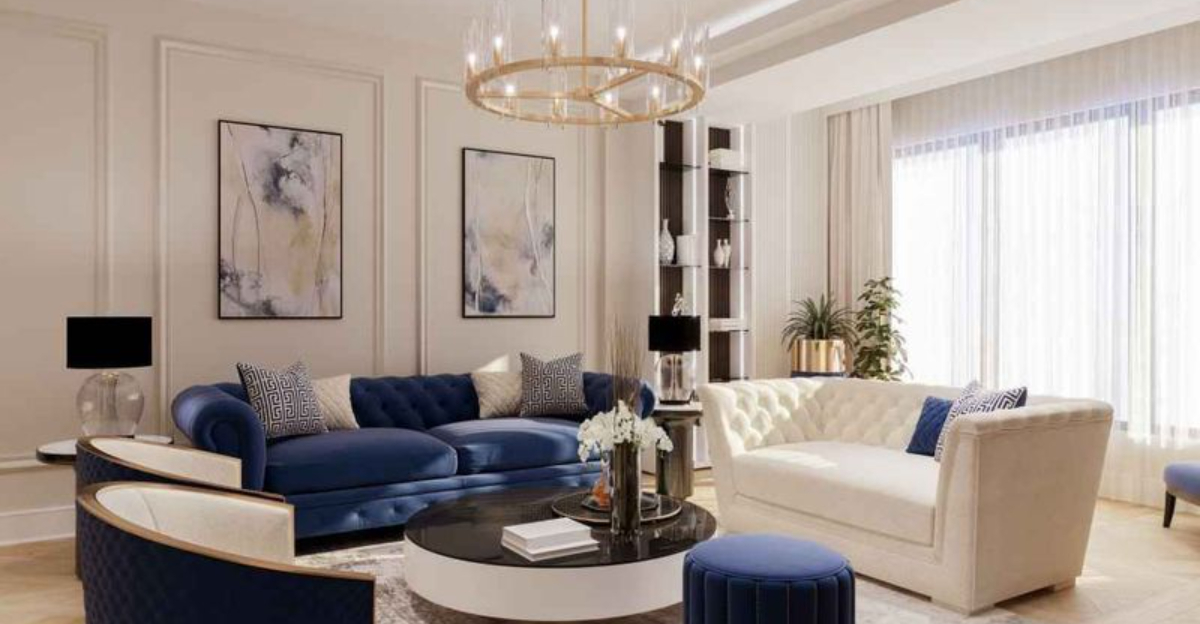
Stepping into a Gatsby-inspired home is like slipping through a time portal to the roaring twenties where elegance ruled, and every detail oozed glamour.
I recently toured a modern masterpiece that channels that Jazz Age spirit while still feeling entirely of the moment. The homeowners struck a perfect balance between vintage decadence and sleek, contemporary style. The result?
A space that dazzles without feeling like a museum. Here are the standout decor ideas I’m already planning to borrow for my own home.
1. Mix metallic finishes for a luxe vibe
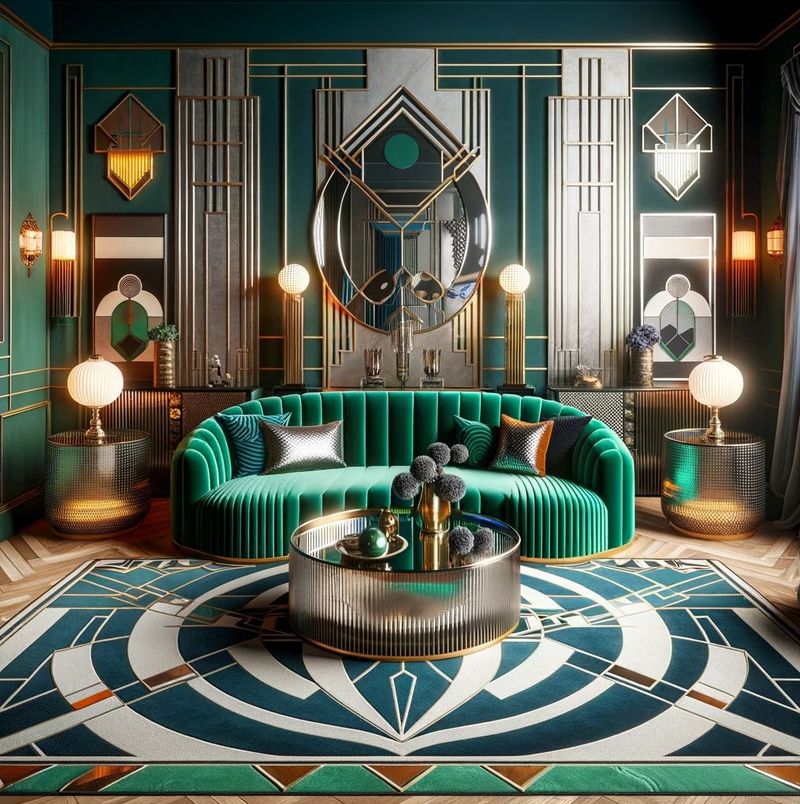
Gold, silver, brass, and copper all mingling together in one space? Absolutely! The Gatsby house taught me that mixing metals isn’t a design mistake it’s a power move. The kitchen featured brass hardware alongside a silver faucet and copper pendant lights, creating depth rather than chaos.
What makes this approach work is having one dominant metal (in their case, brass) with others playing supporting roles. I noticed they kept all metals in the same finish family either all polished or all brushed which maintained cohesion.
My favorite spot was their dining area where a brass chandelier hung above a table with silver candlesticks, proving that breaking traditional design rules often yields the most character-filled spaces.
2. Use bold jewel tones on walls and upholstery
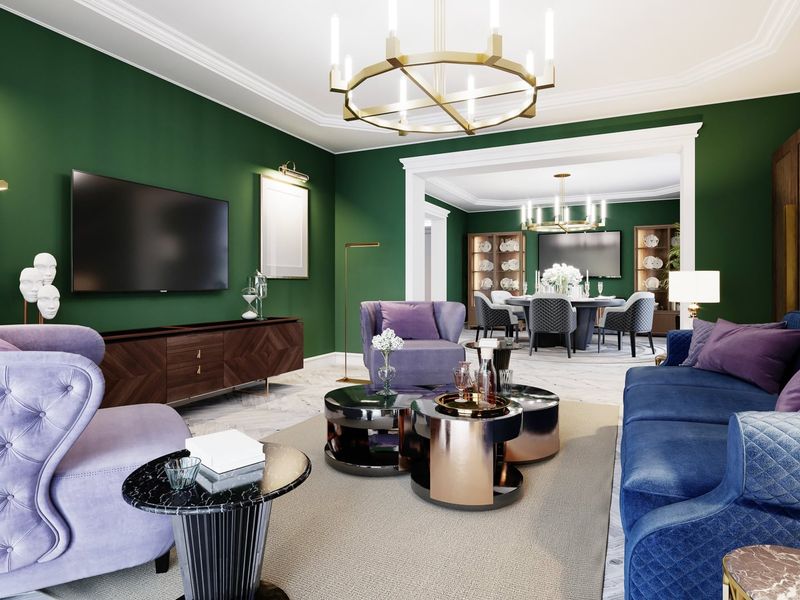
Emerald green, sapphire blue, and rich burgundy dominated the Gatsby house’s color scheme. The homeowners weren’t afraid to commit to these dramatic hues—painting entire walls and choosing statement furniture pieces in these saturated colors.
What surprised me was how these bold choices created intimate, cozy spaces rather than overwhelming rooms. The library featured floor-to-ceiling emerald bookshelves that made the collection of leather-bound books pop. In the lounge, a deep blue velvet sectional anchored the space without competing with the ornate ceiling.
The trick seems to be balancing these powerful colors with neutral elements. White trim, black accents, and cream-colored ceilings provided breathing room while letting the jewel tones shine as the stars of each space.
3. Incorporate art deco geometric patterns
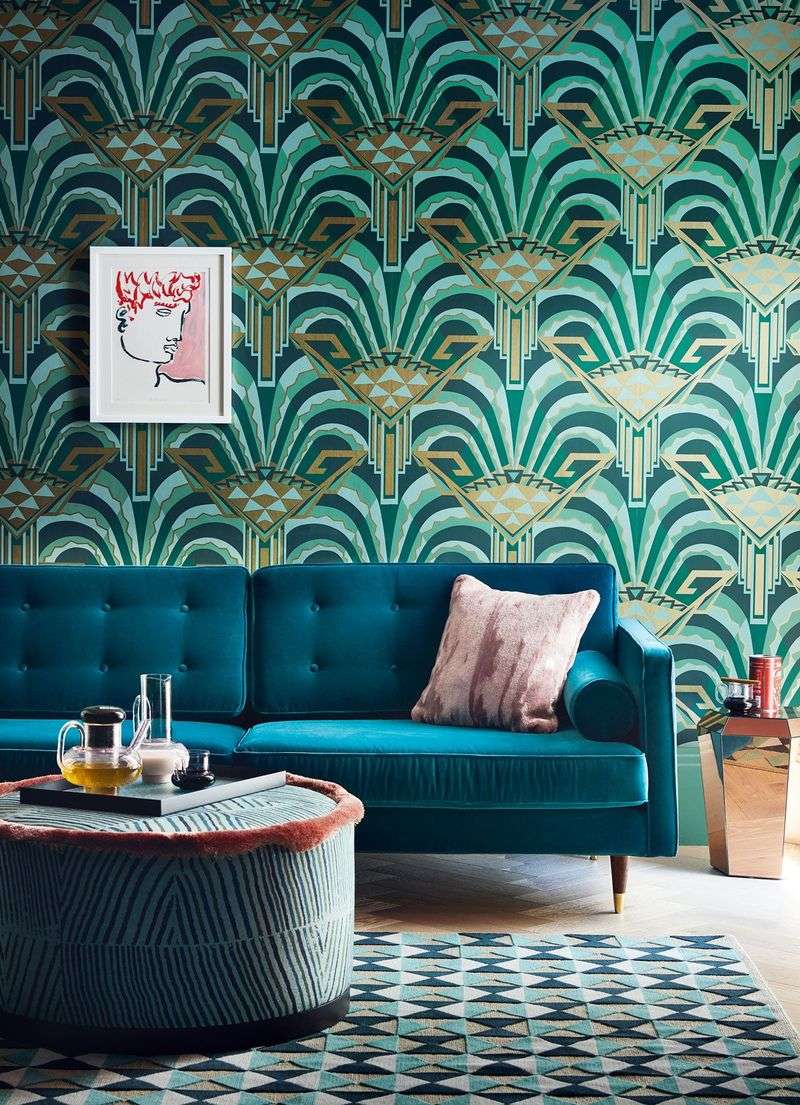
Those iconic zigzags, sunbursts, and stepped forms weren’t just scattered around as afterthoughts they were intentionally incorporated into the architecture and furnishings. The entryway featured custom wallpaper with a subtle geometric pattern that immediately established the home’s personality.
Throughout the house, these patterns appeared on everything from throw pillows to custom built-ins. My favorite application was the bathroom tile a dramatic black and white chevron pattern that transformed a standard shower into a statement piece.
If you’re hesitant about committing to such bold designs, start small. The homeowners showed me how even geometric cabinet handles or a single patterned area rug can inject that Gatsby flair without overwhelming your space. The key is consistency in your pattern choices across rooms.
4. Layer rich textures like velvet and silk
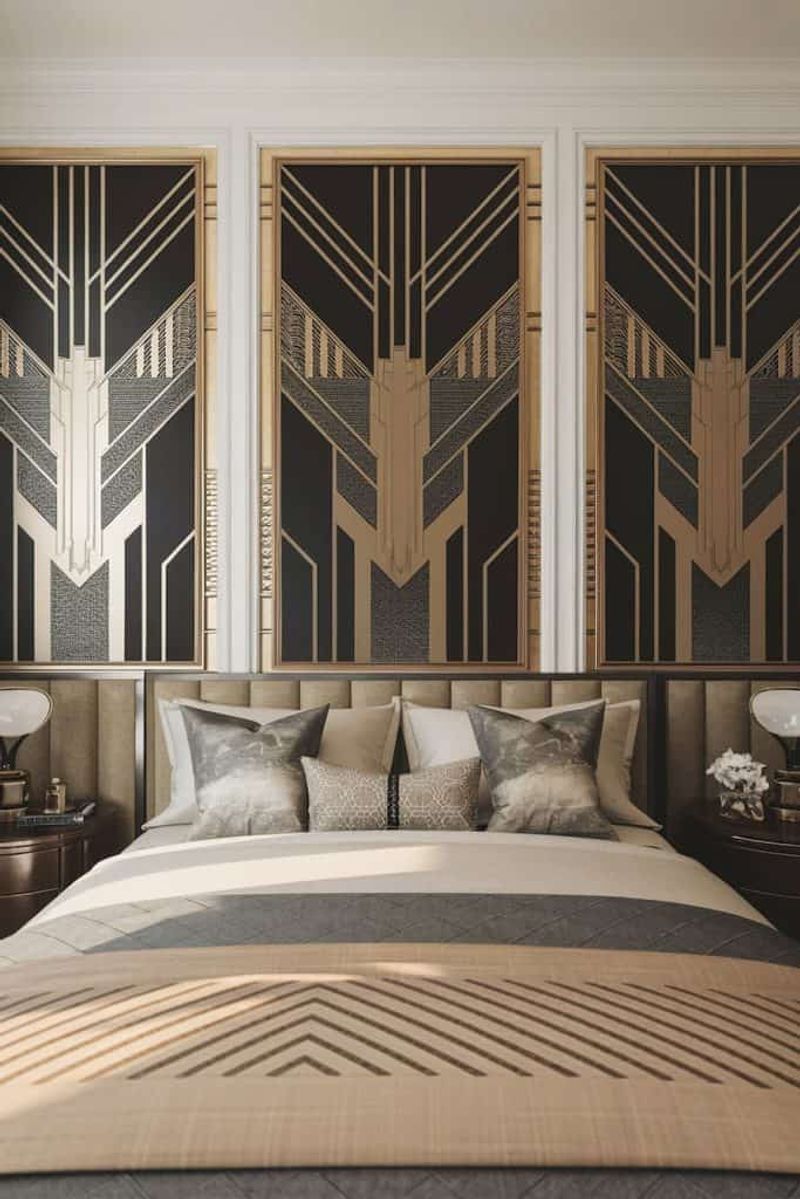
Touching was almost as important as looking in this Gatsby-inspired home. Every surface invited your fingers to explore—from plush velvet sofas to silky smooth pillows and furry throws. The contrast between these textures created visual interest even within monochromatic spaces.
What impressed me most was the unexpected texture combinations. In the master bedroom, a channel-tufted velvet headboard stood against a silk-covered wall, while a faux fur bench sat at the foot of the bed. None of these elements matched perfectly, yet they created a harmonious tactile experience.
The owners explained that texture mixing follows the same rules as pattern mixing—vary the scale and keep a consistent color palette. Even their most formal spaces incorporated touchable elements, making luxury feel accessible rather than stuffy or museum-like.
5. Choose statement chandeliers and lighting
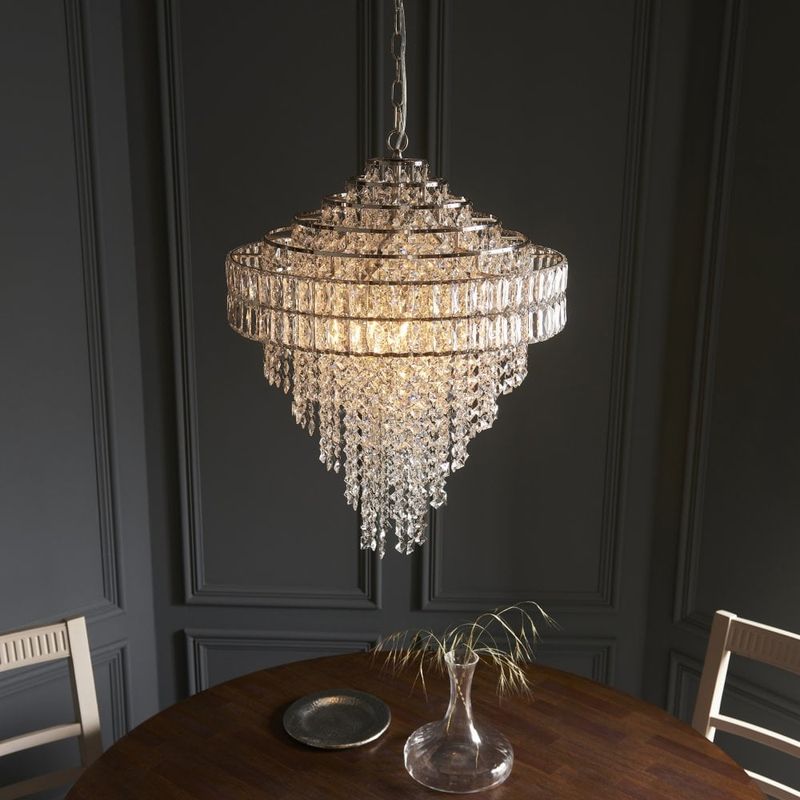
Lighting in this home wasn’t just functional it was jewelry for the rooms. Every space featured at least one eye-catching fixture that commanded attention and set the mood. The dining room’s tiered crystal chandelier cast dancing patterns across the walls during evening gatherings.
Beyond the main fixtures, layered lighting created atmosphere. Wall sconces with etched glass shades flanked doorways and mirrors. Under-cabinet lighting in the bar area highlighted crystal decanters, while table lamps with beaded shades provided intimate pools of light in conversation areas.
My biggest takeaway was how the right lighting transforms spaces throughout the day. Many fixtures were on dimmers, allowing the home to shift from bright and energetic during daytime to moody and mysterious for evening soirées—exactly what Jay Gatsby would have wanted for his legendary parties.
6. Display vintage barware and crystal decanters
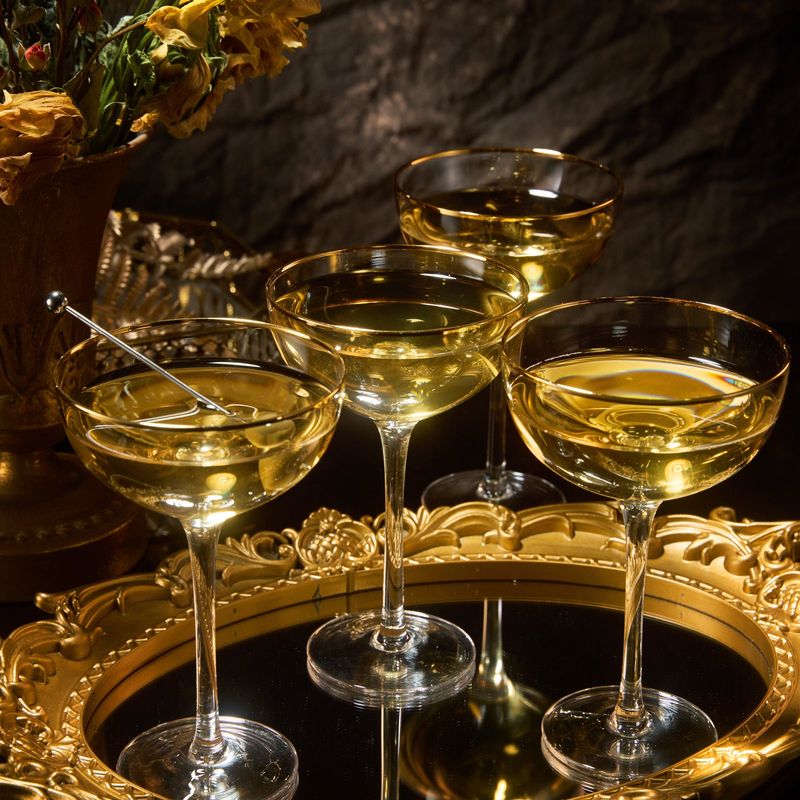
If there’s one thing the Gatsby era celebrated, it was the art of the cocktail. This home embraced that tradition with a stunning bar area featuring an array of vintage decanters, etched cocktail glasses, and silver shakers arranged like museum pieces.
Rather than hiding these treasures in cabinets, the owners displayed them on mirrored trays and open shelving. Amber-colored whiskey bottles and blue gin bottles became part of the color story, while cut crystal caught and reflected light throughout the space.
You don’t need a dedicated bar to steal this idea. I loved how they incorporated smaller drink stations throughout entertainment areas—a few choice pieces on a small cart in the living room, a collection of champagne coupes on a bedroom dresser. Each vignette felt intentional yet effortlessly elegant, ready for impromptu celebrations.
7. Add ornate mirrors to reflect light

Mirrors in this home weren’t merely functional they were architectural statements that amplified both light and drama. An enormous sunburst mirror dominated the entryway, while a collection of smaller gilt-framed mirrors created a gallery wall in the hallway.
Strategic placement maximized their impact. Mirrors hung opposite windows captured natural light and bounced it into darker corners. In the dining room, a wall of antiqued mirror panels created the illusion of endless space during dinner parties.
The homeowners shared their mirror-hunting strategy: vintage stores and estate sales yield the most character-filled pieces. They weren’t afraid to reframe or repaint finds to suit their vision. Even in smaller spaces like powder rooms, they chose statement mirrors over basic ones, proving that functional elements can still be extraordinary in every corner of your home.
8. Integrate black lacquered furniture pieces
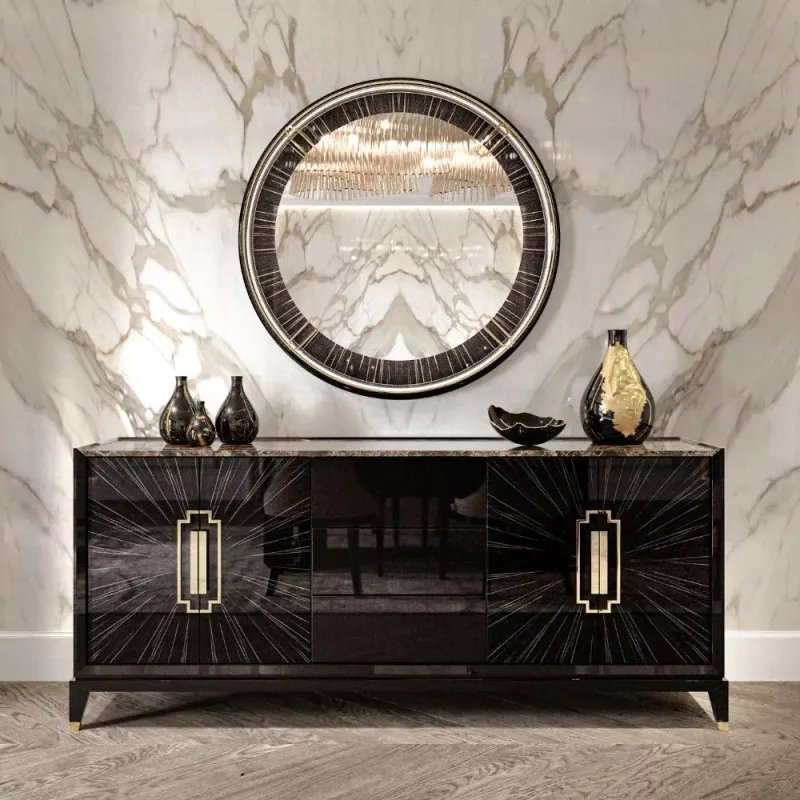
High-gloss black furniture created dramatic focal points throughout the home. These pieces weren’t overwhelming thanks to thoughtful placement—a glossy black piano in the otherwise neutral living room, a lacquered cocktail table anchoring a seating arrangement, sleek black side tables flanking a colorful sofa.
The reflective quality of lacquer surfaces added another dimension to rooms, almost functioning like additional mirrors. In the study, a substantial black desk with gold hardware commanded attention while reflecting objects placed upon it.
When I asked about maintenance, the owners admitted these pieces require extra care but insisted the visual impact was worth it. They suggested starting with smaller accent pieces if you’re hesitant about high-maintenance surfaces. Even a simple black lacquered tray or picture frame can introduce that Gatsby-era sophistication without requiring a major furniture investment.
9. Feature dramatic drapery and tassels
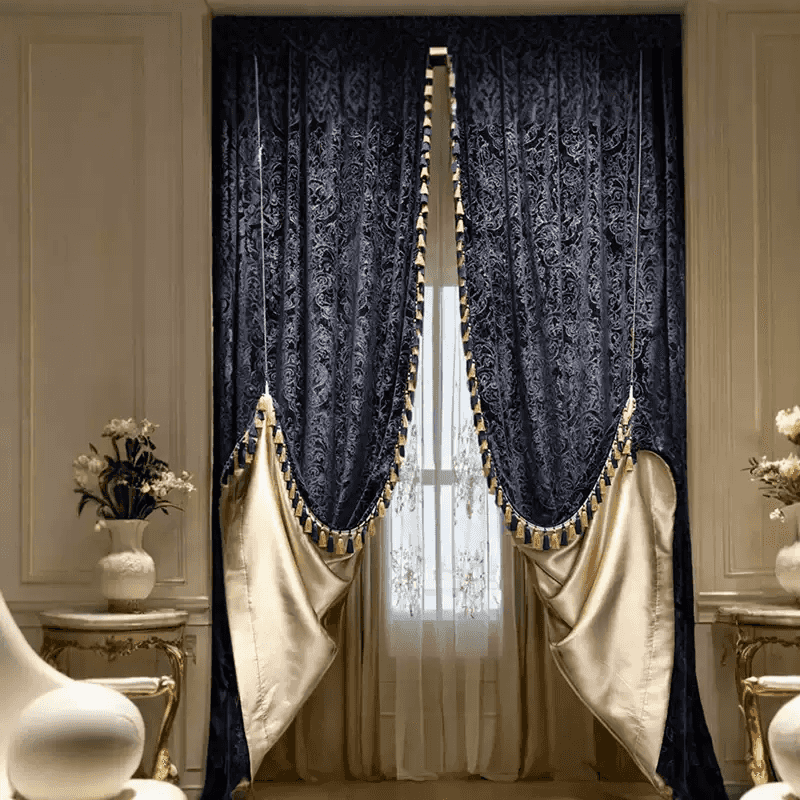
Window treatments in this home weren’t afterthoughts they were major design statements. Floor-to-ceiling velvet drapes puddled dramatically on the floor, framing views and adding height to already impressive rooms. The formal living room featured midnight blue panels with gold tiebacks that transformed ordinary windows into theatrical backdrops.
Tassels and trims appeared everywhere, not just on curtains. Throw pillows sported corner tassels, lamp shades featured beaded fringe, and even the edge of a dining room tablecloth was adorned with subtle silk tassels.
The homeowners explained that these details add movement and playfulness to spaces that might otherwise feel too formal. When I complimented a particularly beautiful set of rust-colored drapes, they revealed their secret standard store-bought panels elevated with custom trim added by their local dry cleaner’s alteration department. Genius!
10. Include curated antique accessories
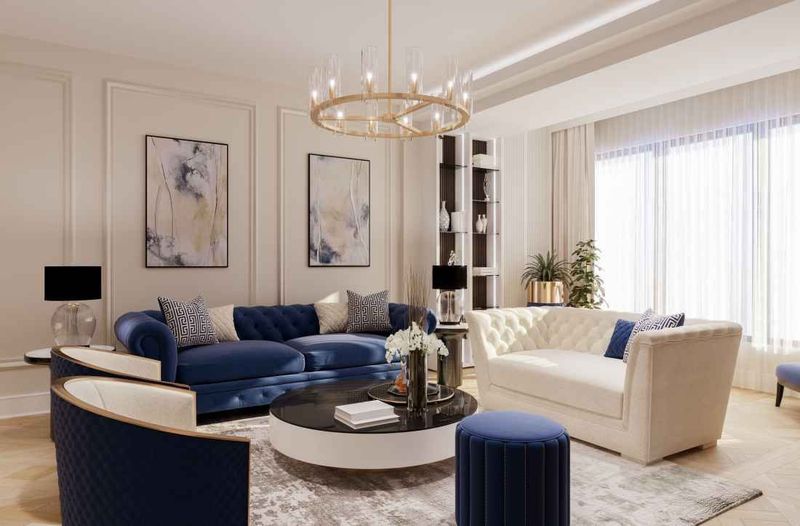
Throughout the Gatsby house, carefully selected vintage pieces told stories and created conversation starters. Unlike homes filled with mass-produced decor, each object felt personal and purposeful—art deco clocks, vintage books, and antique silver picture frames displayed family photos.
The homeowners weren’t precious about mixing periods either. A 1920s telephone sat beside a contemporary lamp. A collection of vintage perfume bottles decorated a modern vanity. This juxtaposition made the space feel collected over time rather than decorated in one shopping trip.
My favorite discovery was learning that many “antiques” were actually flea market finds given new life. An ordinary brass lamp became extraordinary with a new shade. Vintage books were grouped by color rather than topic to create visual impact. The lesson? It’s not about having expensive antiques—it’s about displaying ordinary objects with extraordinary intention.






